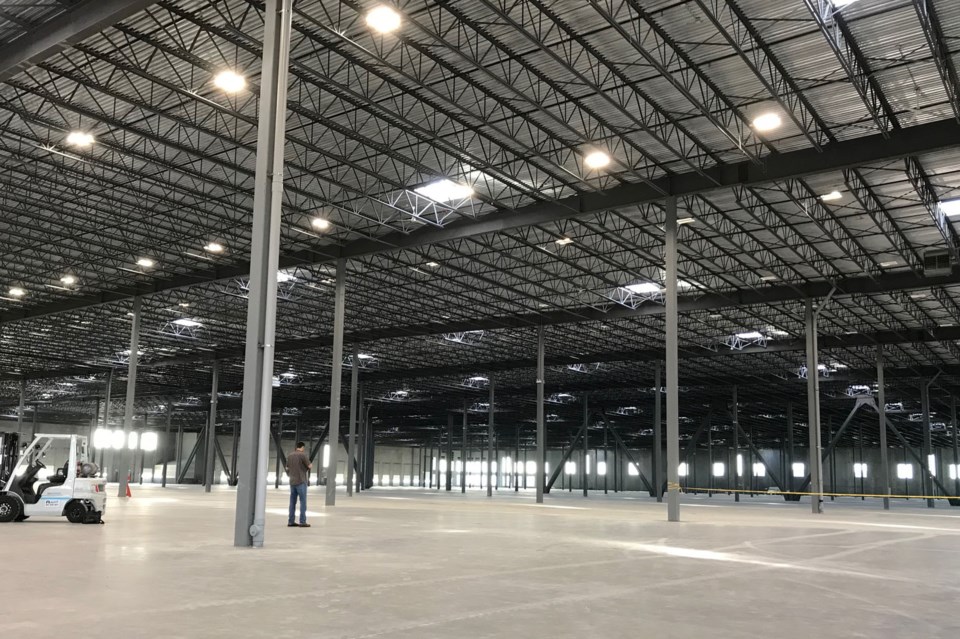Metro Vancouver’s industrial market remains the tightest in North America.
That’s according to the latest industrial overview report by Avison Young, which notes record-low vacancy and rapidly appreciating rental rates are driving sales and leasing activity from owner-occupiers, tenants and investors alike.
Meanwhile, developers continue to pursue new development in increasingly complex settings to keep up with demand.
The report notes regional vacancy hovered at 0.9 per cent in the first quarter of 2021, which was unchanged from year-end 2020, marking the first time that industrial vacancy had slipped to less than one per cent.
Other Canadian cities such as Toronto (one per cent), Ottawa (1.3 per cent) and Montreal (1.5 per cent) were also among the North American industrial markets with the lowest vacancy rates in the first quarter of 2021.
Meanwhile, industrial vacancy in Calgary (7.5 per cent) and Edmonton (6.9 per cent) remained elevated in comparison.
The report also notes ongoing strong demand from tenants in Metro Vancouver’s heavily space-constrained industrial market continued fuelling a rapid appreciation in the region’s average industrial rental rate, pushing it to a record high of $13.87, which is the highest in Canada.
That’s up 3.3 per cent from year-end 2020 and 5.3 per cent from a year earlier.
The report notes the average asking lease rate in Delta was $13.18 per square foot.
Meanwhile, while approximately, 1.3 million square feet of new inventory will be delivered in the region in next six months, about 82 per cent of that space is already preleased or presold.
New logistics centres are on the horizon for Delta including Beedie’s plan to develop the former Pineland Peat site, adjacent to Burns Bog, into an industrial park.
A previous report from the Port of Vancouver noted increasing and developing an expanded land supply is essential to help satisfy demand and keep the many economic benefits of logistics from relocating outside the region.
The port authority noted its proposed Roberts Bank Terminal 2 expansion would not only double container capacity at Roberts Bank but also increase annual logistics-oriented land demand by up to 30 per cent.
Other planned port expansion and improvements will further strain the capacity of the region’s industrial land supply, the port adds.
Metro Vancouver in 2020 approved a new industrial lands strategy, which was endorsed by Delta council earlier this year.
That strategy identified several challenges facing Metro Vancouver's industrial lands including a constrained supply and a “complex jurisdictional environment” as the supply dwindles.
The strategy identifies a series of priority actions including Metro having a stronger regional policy, developing a framework for coordination, defining trade-orientated lands and seeking greater consistency in local government zoning definitions and permitted uses.
City council, however, has already conveyed concerns about the possibility of Metro establishing an industrial land reserve without considerably more information to fully assess the implications for Delta.
Concerned about the future of local farmland, the city wants the regional district to include Delta in any consultation when it comes to establishing such a reserve.
Mayor George Harvie, who chaired Metro’s industrial lands task force, this year said, “I was very strongly against any discussion with regards to cities and municipalities relinquishing their zoning rights. We need to protect our own lands here and not rely on a Metro form of government. We’ve been very protective of our agricultural lands. Other cities over the years have not.”
Meanwhile, when it comes to the port’s proposed Terminal 2 expansion, the city also conveyed concern about the pressure that development would place on prime local farmland.
A report last year notes the city conveyed to an independent federal review panel concern about the port authority’s “statement that the construction of RBT2 will require 2,500 acres of well-located, developable industrial land, and that it would consider using agricultural lands as a 'last resort' to accommodate this.”




